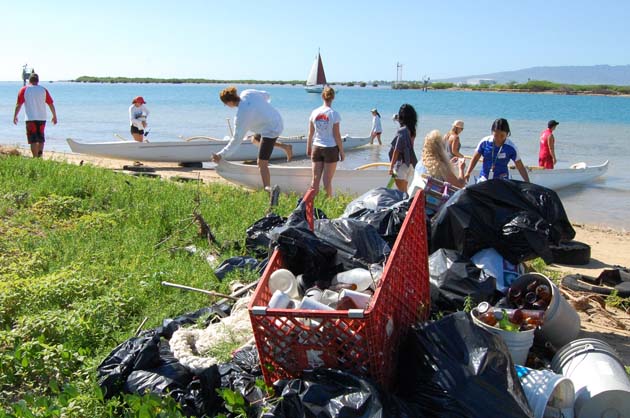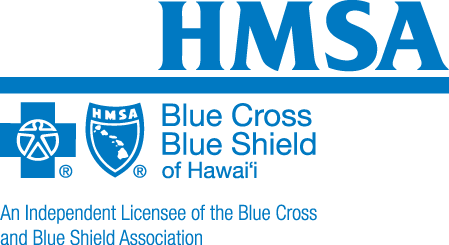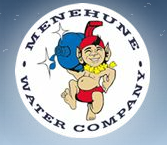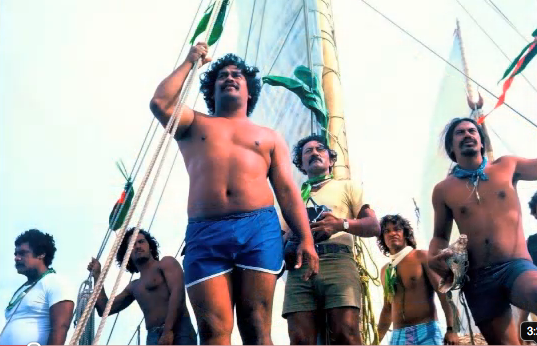Polynesian Voyaging Society: 2011 News and Events
- 2011 Newsletter: Kau Wela (Dry Season)
- 2011 Newsletter: Hoʻoilo (Wet Season) with Membership Letter Insert
Postings
- Star Compass Installed at Honolulu International Airport (October)
- Tahitian Voyaging Canoe Faafaite Departs for Home (October)
- Work on Hōkūleʻa Continues... (October)
- Curriculum Sail to Moloka‘i (September)
- Rejoining Hōkūle‘a’s Hulls (September)
- KCC Fundraiser for Hōkūle‘a(September)
- PVS & the Hakipu‘u ‘Ohana Welcome Pacific Voyagers (June)
- Te Mana o Te Moana/“The Spirit of the Sea” (June)
- Educational Events in May (May)
- Mālama Wa‘a: New Bulkheads and Iako (Crossbeams) (April)
- PVS Founder, Herb Kawainui Kāne, passes on (March)
- Hōkūle‘a’s 36th Birthday, (March 9)
- Hakipu‘u Education Activities (February)
- Aloha, Boogie (January)
- Mālama Wa‘a 2011 (January)
- January 29 Teacher Orientation Session (January)
Mālama Wa‘a Update: November 19
Work on restoring Hōkūle‘a continues at a steady pace. Mahalo nui loa to the many volunteers who have been contributing hundreds of work hours since drydock began in September 2010; completion of the work and relaunching are scheduled for February 2012.

Volunteers preparing fiberglass
In October, over 800 work hours were donated by volunteers to ready Hōkūle‘a for her upcoming statewide sail and worldwide voyage. (Volunteers are invited to call the PVS office at (808) 842-1101 for scheduled workdays, which now include Monday-Friday afternoons, and all day Saturday.)
Progress
The mo‘o, or gunwales (the side boards above the hulls), have been replaced and fiberglassed. The new mo‘o are higher than the old ones, creating more freeboard to block ocean waves from splashing into the hulls.
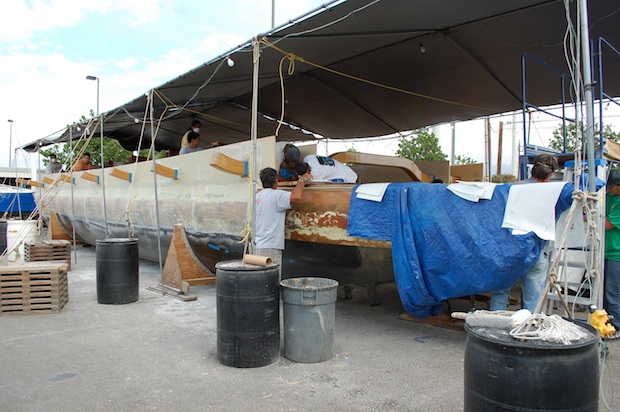
Hōkūle‘a, with new mo‘o
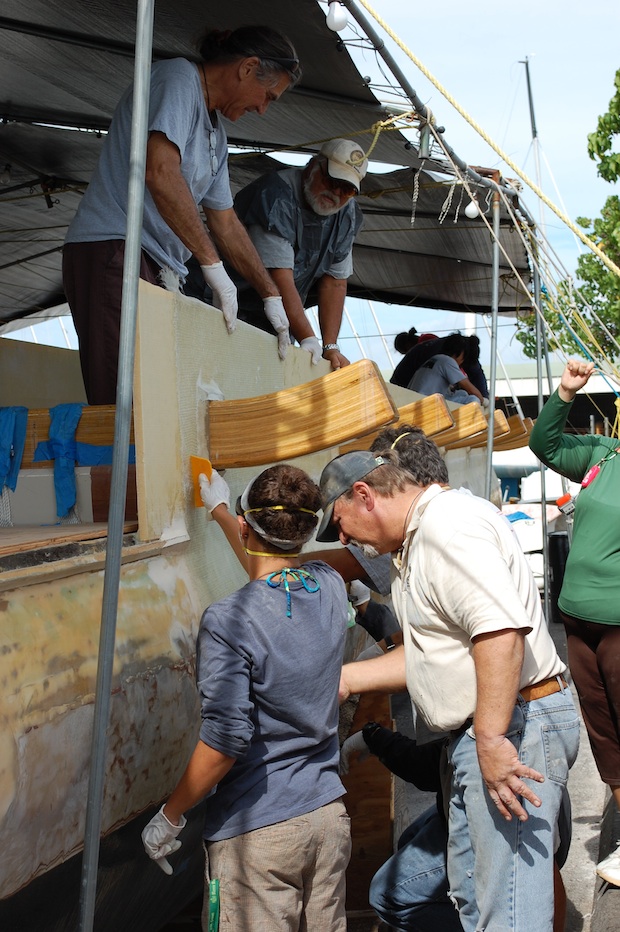
Laying fiberglass over the mo‘o on the port hull.
New back manu (the soaring end pieces that give Hōkūle‘a her distinctive profile) have been affixed to the stern:

The mold for the front manu is finished. From this mold, two new front manu will be produced and affixed at the bow:

Lashing the deck planks onto the crossbeams (‘iako) that join the two hulls is projected to begin at the end of November.
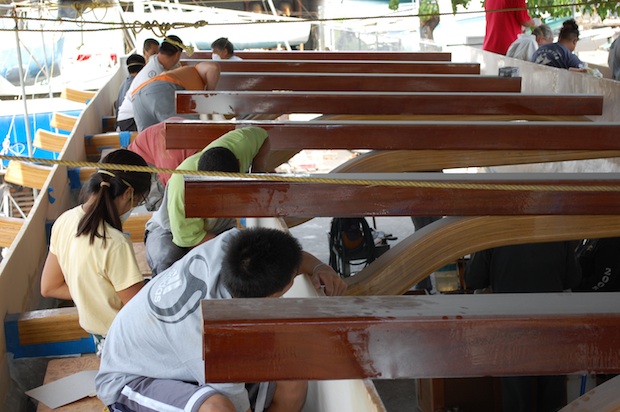
PVS Volunteers sanding the mo‘o inside the two hulls.
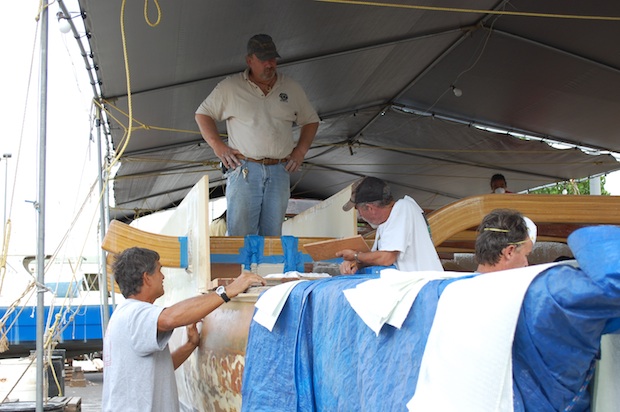
Bruce Blankefeld, Bob Perkins, and Mike Taylor conferring at the starboard bow on the next steps in restoring Hōkūle‘a.
November: Featured in the UH Alumni magazine Mālamalama—Educational Ties between PVS and the University Hawai‘i
"It takes a voyage to unite education and culture," an article in the November issue of Malamalama, celebrates ties between the Polynesian Voyaging Society and University of Hawaiʻi campuses, including UH Mānoa, Honolulu Community College, Kapi‘olani Community College, and Windward Community College.
The article points out that "[p]reparing the next generation for the future is as much a mission for the Polynesian Voyaging Society as it is for the University of Hawaiʻi. Succession planning and leadership training is top of mind for [Nainoa Thompson, education director of PVS], not only to prepare for the upcoming worldwide voyage but to ensure the society has the leadership to carry it into the future and perpetuate the culture and tradition of navigation and voyaging."
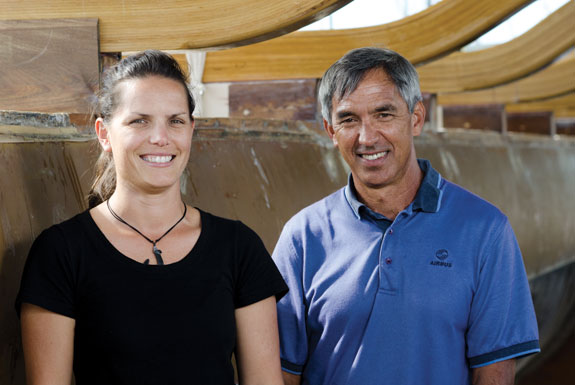
Ka‘iulani Murphy, Honolulu Community College instructor in Hawaiian Studies, teaches a class in traditional navigation; her mentor, Nainoa Thompson, is education director of the Polynesian Voyaging Society. (Photo from Mālamalama)
(Click here to read the Mālamalama article: "It takes a voyage to unite education and culture.")
October 31. Star Compass Installed at Honolulu International Airport
To honor the revival of traditional voyaging and navigation in Hawai‘i, the State Department of Transportation has installed a Hawaiian Star Compass at the Honolulu International Airport, at the entranceway to the ‘Ewa Concourse, between the International and Interisland terminal buidlings.
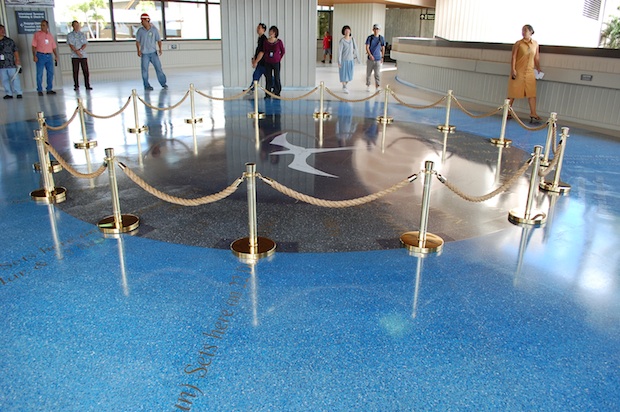
On October 31, Hōkūle‘a crew member and kahu Daniel Kaniela Akaka, Jr. (left) flew in from Kona, Hawai'i, to perform a blessing.
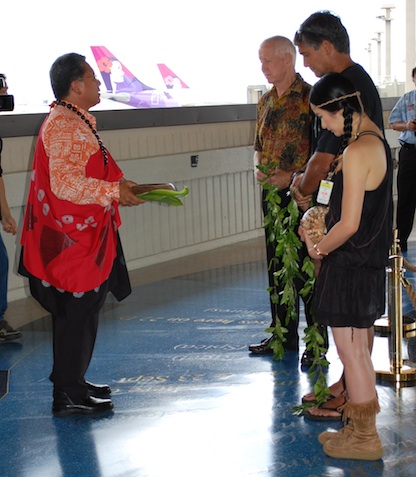

The Thompsons (Na‘inoa, Kathy, Nainoa & Puana) viewing the Star Compass
October 30. Tahitian Voyaging Canoe Faafaite Departs for Home
After a 4.5-month stay in Hawai'i, the Tahitian voyaging canoe Faafaite departed on October 30 for Tahiti from Kealaikahiki, on Kaho'olawe.

Faafaite, with Naiʻa (Dolphins), off Kahoʻolawe. Photo by Danee Hazama
On October 27, Keone Nunes conducted an 'awa ceremony for the departure from METC (Marine Educational Training Center) in Honolulu, where Faafaite had been docked.
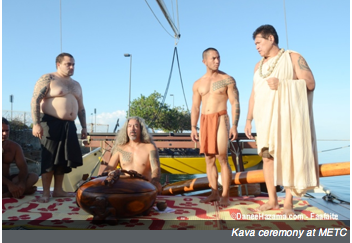
Keone Nunes (right) on the Faafaite. Photo from the Faafaite Pacific Voyagers Blog
After the 'awa ceremony, the canoe sailed for Mahukona on the Big Island of Hawai'i, to Ko'a Heiau Holomoana (voyagers/navigators stone temple), where the Tahitians were greeted by navigator Shorty Bertelmann and the Makali'i 'Ohana. At the heiau, the Tahitians placed a stone offering from Tahiti, aligned with three stones that point to their homeland in the south. For more on the Faafaite departure, see the Faafaite Pacific Voyagers Blog.
Sailing on the Faafaite to Tahiti are Hawaiian voyagers Snake Ah Hee and Shantell DeSilva, and Hilo/Hōkūalaka'i navigator Chad Baybayan.

Moana'ura starting the equator-crossing ceremony at dawn. Crédits photo: Danee Hazama

Hawaiian naivgator Kalepa Baybayan gives a pule for the safe passage of the va'a and crew.
Crédits photo: Danee Hazama
Follow Faafaite's voyage to Tahiti at the following sites:
internet:www.faafaite.pf
blog: www.faafaite.com
faafaite sur facebook: www.facebook.com/faafaite
October-November. Work on Hōkūleʻa Continues...
Hōkūle‘a is undergoing extensive work in drydock at Honolulu Community College’s Marine Education and Training Center (METC) on Sand Island. (Click here for a Google Map.) She will emerge stronger, lighter, and wider in preparation for a statewide sail and a worldwide voyage. Hundreds of volunteers are supporting the work.
Volunteers are needed to complete the restoration of the canoe by early 2012. Call the PVS office at (808) 842-1101 for scheduled workdays.
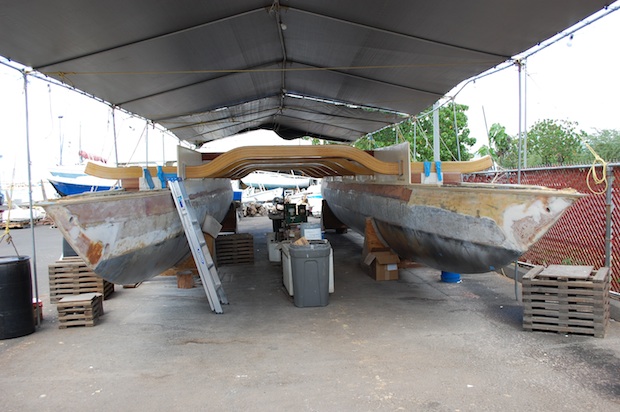
Hōkūle‘a, October 31, 2011

New ‘Iako (Crossbeams)
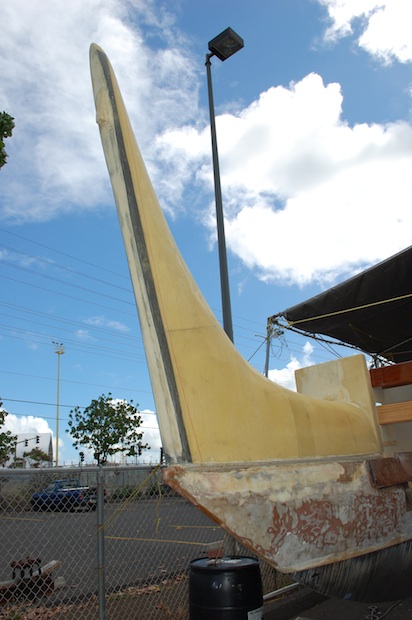
New Manu
September: Curriculum Sail to Moloka‘i
PVS sailed to Moloka‘i this summer with University of Hawai‘i at Mānoa College of Education students. The project was a part of the Department of Curriculum Studies’s EDCS 630 Cultural Diversity and Education graduate course, which focused on the theme of Visions and Voyaging.
The focus of this year’s EDCS 630 was the critical examination and application of multicultural education. Students developed a voyaging curriculum that integrated navigation with the content areas of math, language arts, science and social studies to be used for the Hōkūle‘a’s worldwide voyage in 2013.
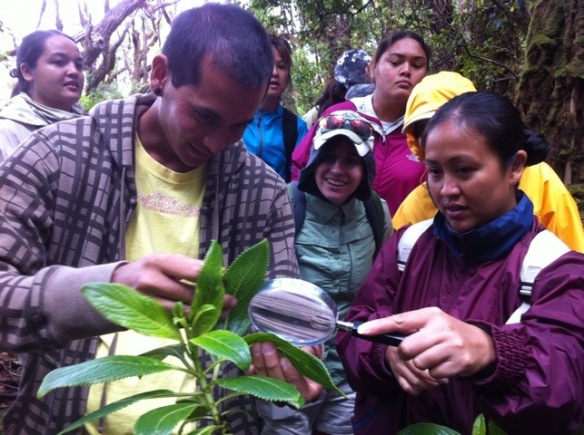
The group of curriculum writers sailed to Moloka’i to explore the connection between the canoe and island earth.
“This experience looked at education broadly and critically, helping teachers to envision what education should look like to serve all students,” said Associate Professor Patricia Halagao. “Addressing the need for educational reform, the worldwide voyage will be a catalyst for change in curriculum development and pedagogy.”
The three-day sail included an outreach event with faculty from Maui Community College, Molokai High School, and nine UHM College of Education curriculum studies students.
(For more photos and the full article, see "College of Education Curriculum Studies Students Set Sail" at the University of Hawaii at Mānoa College of Education website.)
September: Rejoining Hōkūle‘a’s Hulls
Under the leadership of Captain/Navigator Bruce Blankenfeld, volunteers have begun to lash on the eight ʻiako or crossbeams that join the two 62-foot hulls of Hōkūle‘a together.
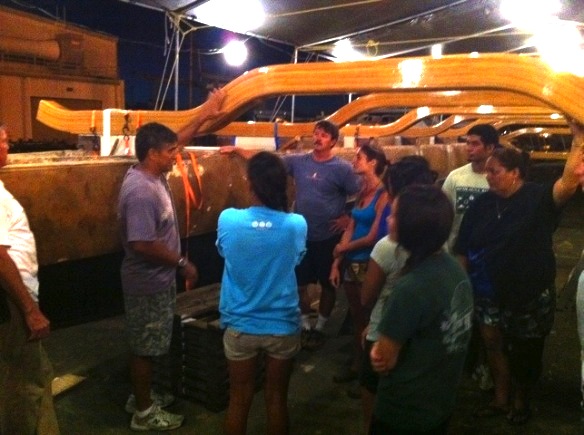
The new ‘iako are two feet wider than the ones they are replacing, making the canoe a roomier, more stable educational platform. About six miles of line will be used to tie all of Hōkūle‘a’s pieces and parts together again.
Work nights are Monday, Tuesday, Thursday and Friday; work also continues on Saturday at Honolulu Community College’s Marine Education and Training Center (METC) on Sand Island. (Click here for a Google Map.) . For more information about volunteering, call the PVS office at 842-1101 or email the PVS office at pvshawaii@hawaiiantel.net.
September: Hōkūle‘a Fundraiser at Kapi‘olani Community College: Mahalo Nui Loa!
PVS extends its deepest appreciation to the performers, volunteers, and ticket buyers and audience for supporting the rebirth of Hōkūle‘a for future generations.
A benefit concert on Saturday, September 10, 2011, 5:00-9:20 pm at Kapi‘olani Community College was successful in raising much-needed funds for equipment and supplies to restore and outfit Hawai‘i first voyaging canoe for a new generation of voyagers, in preparation for her upcoming statewide sail and worldwide voyage.
Special thanks to the performers who donated their time and talent:
- Kawika Napoleon and Lehua Gaison-Tyler of Kapi‘olani CC for their chant and hula pahu for Hōkūleʻa
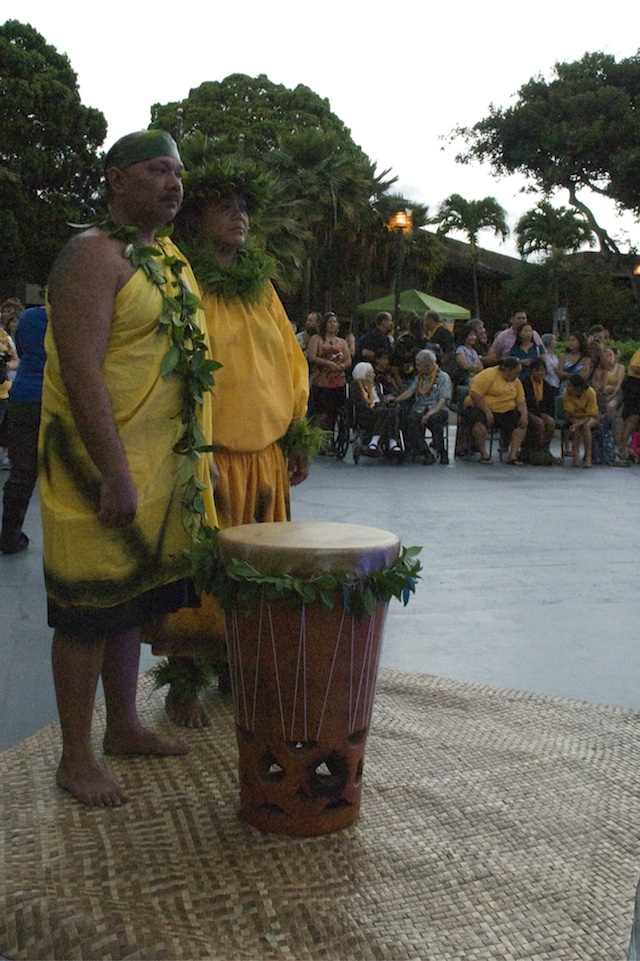
Photo by Kapulani Landgraf
- Musicians Danny Carvalho, Kāwika Kahiapo, Mike Kaawa, Weldon Kekauoha, Ernie Cruz, Jr., and the players who accompanied them for outstanding performances
... to the artists who shared their work at the event:
- Filmmaker Na‘alehu Anthony, whose Documentary Papa Mau, The Wayfinder played to a standing room only crowd. (The film will be aired on KHET Hawai‘i Public Television Station on Thursday, Sept. 29, at 8 and 11 pm.)
- Photographers Na‘alehu Anthony, Monte Costa, and Sam Low for an amazing display of voyaging photographs.
The event also featured the opening of a Hawaiian Star Compass, the first such compass at a campus in the University of Hawai'i system.
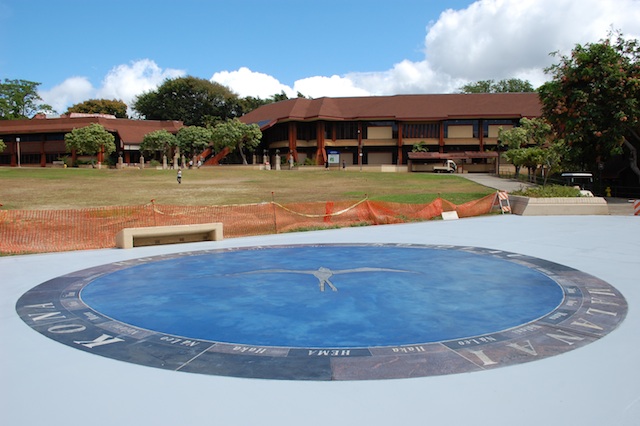
The compassed was developed in 1978-1980 by navigator Nainoa Thompson, based on the Micronesian star compass of Satawalese navigator Mau Piailug: "The Hawaiian star compass," explains Thompson, "is the most important fundamental construct that is used and needed to make the entire navigational system work. All of our navigation is based on the principles and design of the star compass, which comes from the teachings of Mau Piailug. Everything in navigation is directly connected and related to it. It really is a testament to the genius of our ancestors. So it's an honor to have the star compass being used as an educational tool at KCC."
PVS thanks Chancellor Leon Richards for supporting the installation of the compass at KCC and for inviting PVS to hold its Hōkūle‘a benefit concert there. The chancellor notes: "The compass symbolizes the educational journey students will take with the knowledge that they are being guided by the wisdom of an ancient past."

Nainoa, navigator Bruce Blankenfeld, and Chancellor Richards opening the Star Compass for use as a teaching tool. To the left is Will Kyselka, a retired University of Hawai'i education professor and lecturer at the Bishop Museum Plantetarium, whom Nainoa honored as a teacher who helped him to understand the Micronesian Star compass and develop his Hawaiian star compass. Photo by Kapulani Landgraf.
... and finally, mahalo nui loa to the KCC Mālama Hōkūle‘a committee who spent many hours behind the scenes working closely with PVS to make the concert a success; and to our supporting sponsors:
June: PVS & the Hakipu‘u ‘Ohana Welcome Pacific Voyagers
The seven voyaging canoes in the Pacific Voyagers Fleet traveled to O`ahu this week and were welcomed by the Polynesian Voyaging Society and the Hakipu‘u Ohana on Saturday, June 25 at Kualoa Regional Park. After the event they sailed to HCC’s Marine Educational Training Center in Honolulu Harbor, home of Hōkūle‘a, where they will remain till departure on July 6 for Kaua‘i.

The canoes are representing Tahiti, Samoa, Fiji, Tonga, New Aotearoa, New Guinea, Vanuatu, Kiribati and the Solomon Islands and are sailing together in a voyage titled "Te Mana O Te Moana." They sailed from Nukuhiva in the Marquesas on June 2 and arrived in Hilo on June 16.
- Background on the Voyage: Pacific Voyagers/Te Mana O Te Moana.
- Where the canoes are today: Google Tracking Map
- News from the canoes: Voyage Blog
"Peia Patei [Cook Islands navigator] received his Pwo from Kaumatua Hector Busby [Aotearoa] and all attending navigators. Peia was supposed to receive Pwo from Papa Mau himself on Sawatal in 2007, but Peia couldn’t attend the ceremony. Now he received it in a new way, in a different country, in Hawai’i, from other master navigators. Peia is now a guiding light for the rest of us." (From Pacific Voyagers Blog).
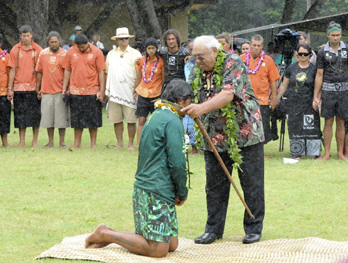
The crews performed the Hōkūle‘a haka in Peia's honor.

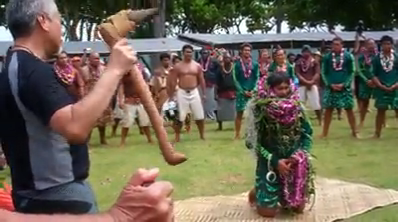
Screen capture from video posted by Louisa Mosese Te'i on Facebook (Hōkūle'a WWV Fan Page)
The South Pacific canoes and crews were welcomed by the Pacific Islands communities in Hawai‘i.


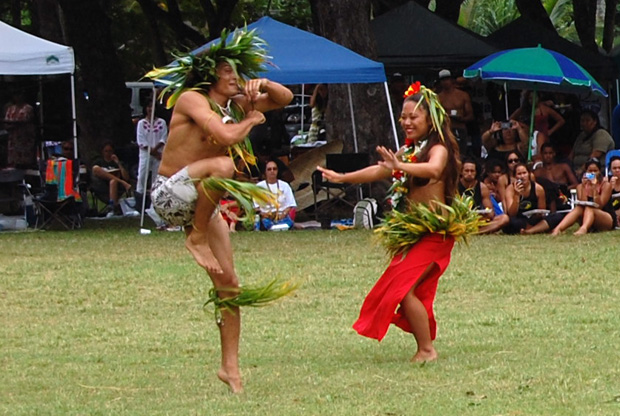
“We are extremely honored to have these canoes voyage to Hawaii,” said Nainoa Thompson, president of the Polynesian Voyaging Society and master navigator of Hawaii’s voyaging canoe, Hōkūle`a. “As the next generation of voyaging canoes, Te Mana o Te Moana brings welcome focus to the need to preserve and protect our oceans and to continue traditional voyaging traditions in modern times. These wind and solar powered canoes are also strong symbols of sustainability and the ability of our ancestors to live in balance with nature.”
The seven wa‘a (canoes) from the South Pacific docked at METC (see below), after they departed from Hakipu‘u-Kualoa on June 25. They will remain at METC until they depart for Kaua‘i on July 5.
The fleet of seven is sailing under the auspices of the Okeanos Foundation which is dedicated to the preservation of the world’s oceans and marine life.
June: Te Mana o Te Moana/“The Spirit of the Sea”
A fleet of seven Pacific canoes with crews from Aotearoa, the Cook Islands, Fiji, Samoa, Tahiti, and pan-Pacific (2) arrived in Hilo on June 16. They left Nukuhiva in the Marquesas, on June 4.
A welcome ceremony was held at Hilo One (Hilo Bay Beachfront Park), on Sunday June 19, 2011.
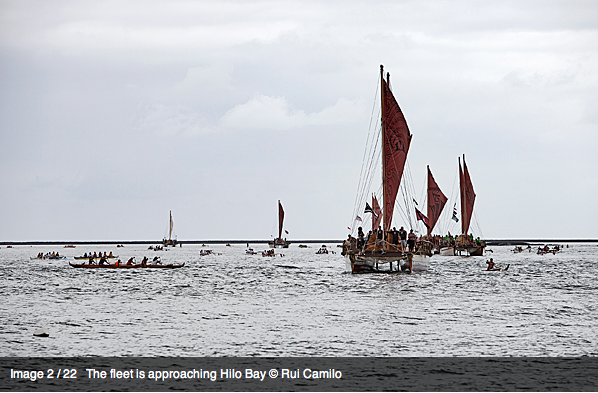
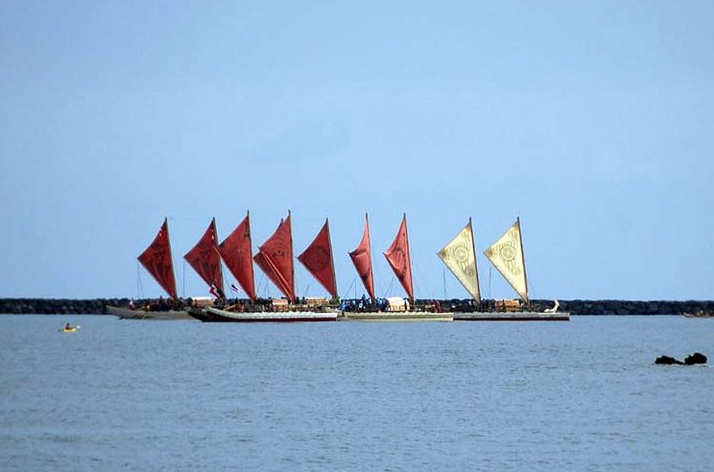
Wa‘a. Photo by Dennis Taniguchi (on Facebook)
The mission of Te Mana o Te Moana is to teach young people traditional knowedge and respect for the ocean as well as increase scientfic knowledge and awareness of "the costs which ocean climate change will have for us all."
After Hilo, the canoes visited Maui and Moloka‘i and before heading for O‘ahu, where they were welcomed at Hakipu‘u-Kualoa in Kāne‘ohe Bay on Saturday, June 25. The canoes then docked at HCC’s Marine Educational Training Center in Honolulu Harbor, home of Hōkūle‘a.
In Honolulu, the crews will participate in an Ocean Summit at the East-West Center on the University of Hawai‘i at Mānoa campus, at the end of June.
After the summit, the canoes plan to sail to Kaua‘i, then across the Pacific to San Francisco, Monterey, Santa Barbara, Los Angeles, and San Diego. After a winter break, the canoes will return to the South Pacific via the Galapagos Islands.
May: Educational Events
- May 1, Sunday, Waldorf School: Wayfinding Festival / PVS Fundraiser: A May Day of Learning and Entertainment.

Kealoha Demonstrating Canoe Cooking.
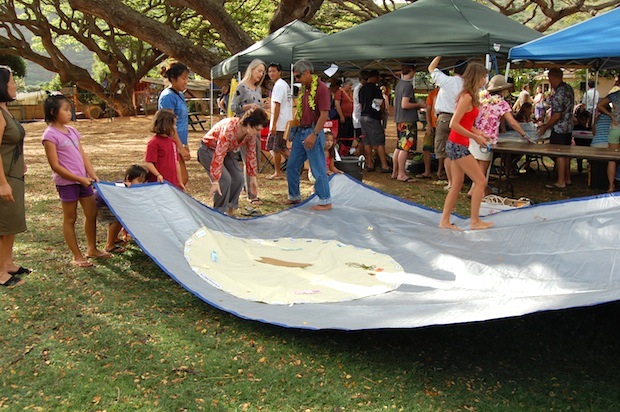
Sachi and Karen, with The Star Compass Game.
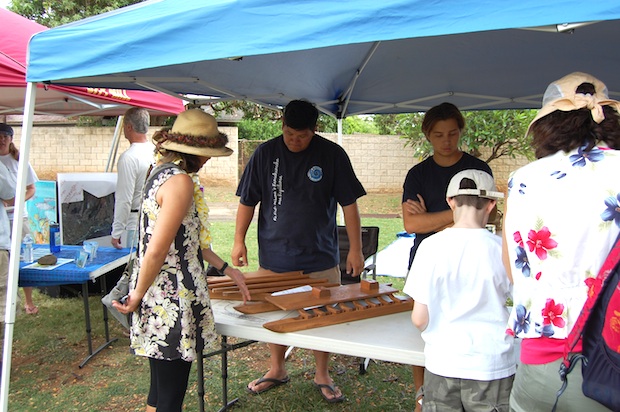
Mark going over canoe parts.
- May 14, Saturday, Kalani High School: Maunalua Bay Heritage Festival.
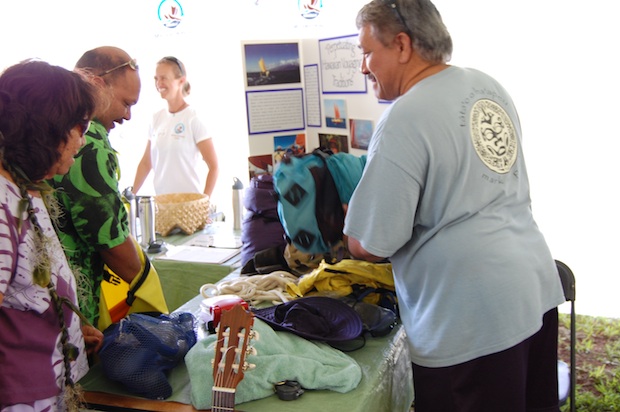
Grant packing the gear bag at the PVS display booth.
Spring: Mālama Wa‘a—New Bulkheads and ‘Iako (Crossbeams)
New bulkheads for Hōkūle‘a are in place. Bulkheads create watertight compartments inside the hulls and add strength. With new construction methods not available when she was built over 35 years ago (1973-1975), Hōkūle‘a should be lighter and stronger, in preparation for the World Wide Voyage.
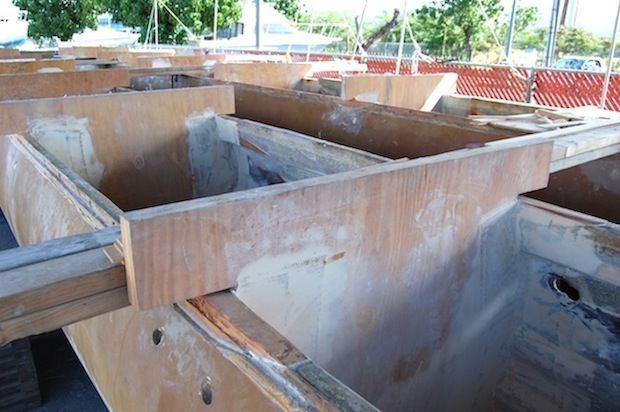
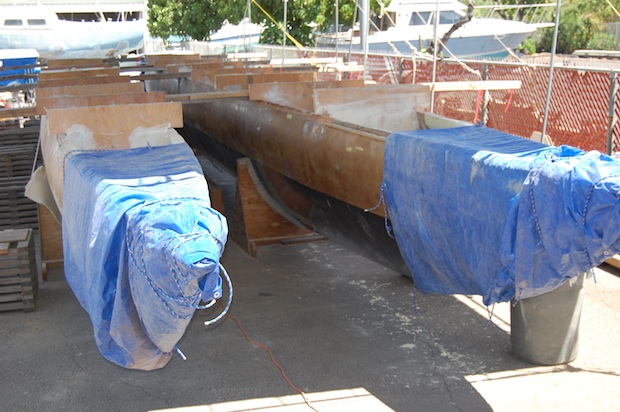
Eight new ‘iako arrived from Maine, where they were fabricated at John Williams Boat Co. Two feet longer than the old ones, the new ‘iako will allow for a two-foot wider deck.
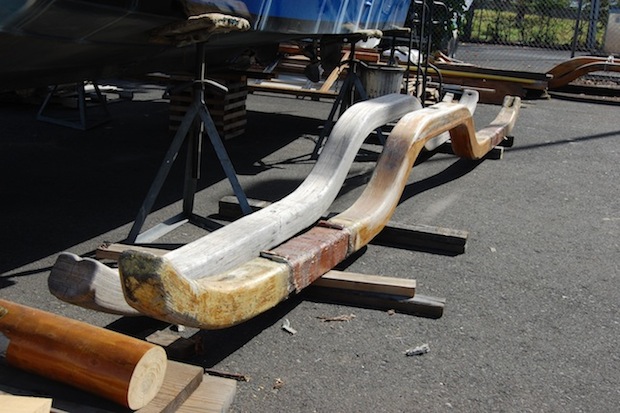
Old ‘Iako

New ‘Iako
An article in Epoxyworks (Spring 2011) describes the process of fabricating the ‘iako: "Building Iakos" by Joe Parker.
March: Aloha, Herb

PVS founder Herb Kawainui Kāne passed away on March 8, 2011, thirty-six years after the launching of Hōkūle‘a, the voyaging canoe he conceived of in the early 1970's. Hōkūle‘a nurtured and advanced the Hawaiian Renaissance and became one of its most powerful and globally-recognized symbols. Herb served as the canoe's first captain.
In Voyagers, published in 1991, Herb explained how Hōkūle‘a came to be:
There was no one alive who could answer the questions. For long years scholars had argued whether Polynesian navigators had the ability and the vessels to master the vast Pacific.
I knew now how the old canoes had been built. What if we actually built a full size replica of a canoe incorporating the functional design features most widely distributed throughout Polynesia? Putting such a canoe to an actual test would test as well the accounts of Polynesian navigation. An actual sailing would provide data that might settle this long dispute. Even more intriguing to me was the thought that recreating the central object of the ancient culture and taking it to sea might stimulate the growing interest in a cultural revival.
The idea attracted others. We incorporated as the Polynesian Voyaging Society and recruited members. I drew a preliminary plan for such a canoe, then made a painting. Feeling altogether foolish, I found myself flashing the painting around Honolulu, asking for money. Hundreds of volunteers came forward to contribute time, talent, and substance, and the canoe got built.

Herb was born in 1928 and grew up in Waipi‘o Valley on the Big Island of Hawai‘i. He became a world-renowned artist after studying at the Chicago Institute of Art. He was also an author who published books on Hawaiian culture and history.
U.S. Senator Daniel K. Akaka (D-Hawaii) noted Herb's contribution to the Hawaiian people and culture in the following statement today:
Herb Kane helped the world recognize the history and culture of the Native Hawaiian people through his art. He showed ancient Hawaiians as they were: explorers, seafarers, trailblazers in land and resource management. His beautiful portraits displayed on stamps, in National Parks, and in museums continue to inspire people around the world. Our thoughts and prayers are with his family and friends during this difficult time.
March: Hōkūle‘a’s 36th Birthday
Tuesday, March 8, 2011 at 6:00 pm
Hakipu‘u/Kualoa Park
Hakipu‘u/Kualoa is the birthplace of Hōkūle‘a, where on March 8, 1975 Hōkūle‘a was launched, and therefore is a very significant site for the start and end of our voyages.
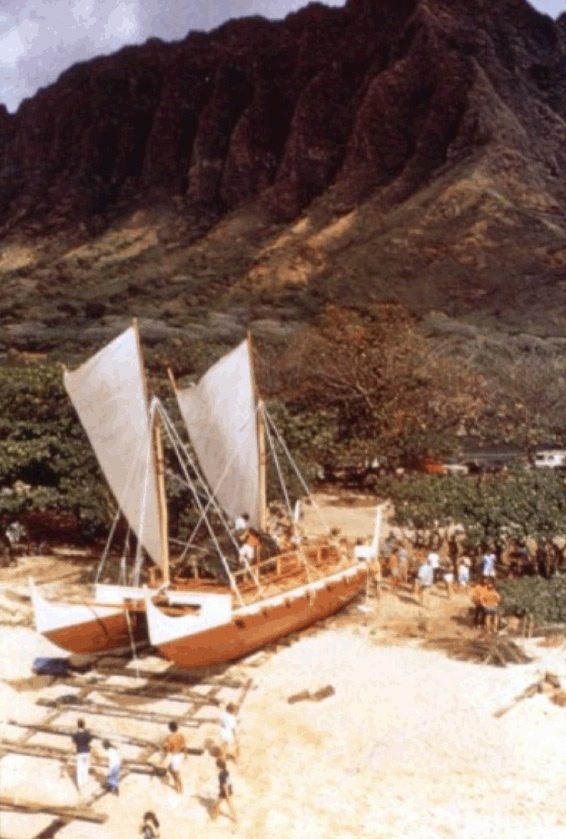
Hōkūle‘a Launching, March 8, 1975
In celebration of Hōkūlea birthday we will gather at Hakipu‘u/Kualoa Park to honor our kupuna, including Wally & Moku Froiseth, Will & Lee Kyselka, and so many others who have given us so much. We also want to recognize Herb Kāne and Ben Finney, our PVS founders, whose extraordinary visions and dreams created Hōkūlea, and gave birth to all that followed.
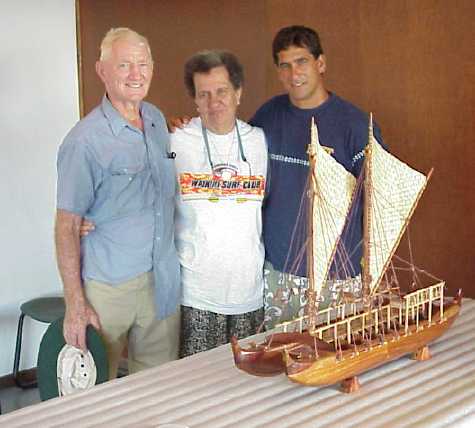
Captain Wally Froiseth, on the left, and his wife Moku (a PVS board member) with navigator Bruce Blankenfeld. The canoe model is a gift for the Rapanui Museum (1999).

Educators Will and Lee Kyselka.
We take this time to pray and send our aloha to all our kūpuna. For those of you who are able, please join us on Tuesday, March 8 at 6:00 pm at Hakipu‘u/Kualoa Park. For those of you who can’t physically be there, please take a moment wherever you are, to be with us in prayer at that time. And, as we ask blessings for all our kupuna, please say a special prayer for Herb Kāne and his wife Dionne. Herb is still in critical condition, but his health improves each day, and Dionne asks that we continue to keep him in our thoughts and prayers.
Archival Video and Film (Length: 10 minutes): Hōkūle‘a 1976, including The Arrival in Tahiti, and the Arrival back home in Hawai‘i. Posted on YouTube by pcsige.
February: Hakipu‘u Voyaging Camp

Kamauheheu (Polynesian Voyaging Society) and Eala (Wai'anae Hawaiian Civic Club) at Hakipu‘u
On February 19 and 20 teachers and students from Kaiser, Kapolei, and Kahuku high schools, Halau Kū mana charter school, Lanikai charter school, and Boy Scouts attended a voyaging education event at Hakipu‘u in Kāne‘ohe Bay. The participants went through a rotation that included learning about and sailing on coastal canoes, a cultural and historical tour with relevant mo'olelo about Ku'aloa and the Hakipu'u area, and a service project invovling pulling invasive seaweeds from the reef.
The event was aimed at developing curriculum for the upcoming statewide and worldwide voyages of Hōkūle‘a.

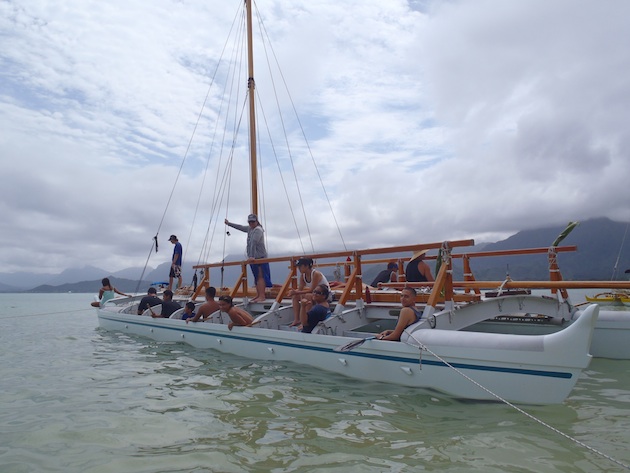
Students aboard Kamauheheu
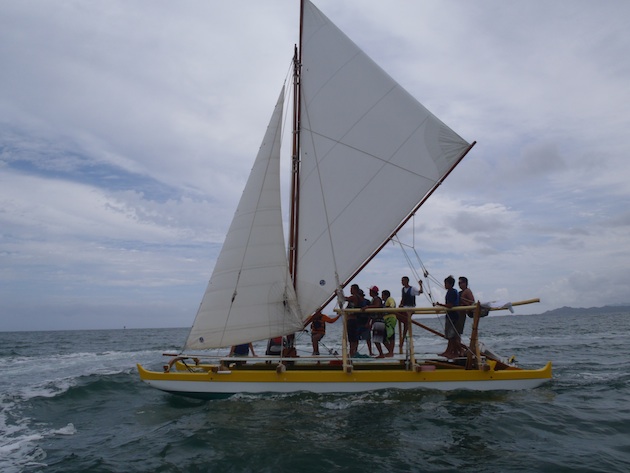
Students aboard Kānehunamoku (Halau Kū Mana)
January: Aloha, Boogie
George “Boogie” Kalama, crew member on the first Hōkūle‘a Voyage to Tahiti in 1976, passed away on Jan. 19 at Hilo Medical Center.
A video in memory of Boogie has been posted on Youtube, by ohanawaa:
Hōkūle‘a 1976, Boogie Kalama
Moke Young posted this message on Pacific Network:
Aloha! Hoping that your spirit is soaring. In memory of Boogie Kalama a true Hawaiian Waterman whom stood for all (and some) that major religious groups strive for; generocity, peace, love, kindness, joy etc.. His music artistry will be missed too. Uncle Boogie composed the song "Star of Gladness" that was popularized by IZ. "Boogie Kalama was a man of the Land & Sea." His strong spirtuality & well-being lead him to comfort & nurture those around him; an awesome example of Aloha! "The World Needs Aloha!" Malama Kou Kino, Moke Young.
January: Mālama Wa‘a 2011/ "Taking Care of the Canoe"
Volunteers Needed: Mālama Wa‘a work takes place on Monday, Tuesday, and Thursday evenings at 5:00-9:00 pm and Saturdays from 7:00am – 3:00 pm, at Honolulu Community College's Marine Education and Training Center. Call the PVS office at METC, at (808) 842-1101, if you are willing and able to assist in the work.
Update: During the weekend of January 29-30, the decking and front manu of Hōkūle‘a’s hulls were removed, so that PVS could inspect the integrity of the hulls after 34 years and 130,000 miles of sailing. The inspection revealed dry rot, in the bulkheads, stringers, and hulls themselves. A marine surveyor will be brought in next week, and PVS will develop a plan to restore the integrity of the hulls for the Worldwide Voyage and the next 35 years of voyaging.
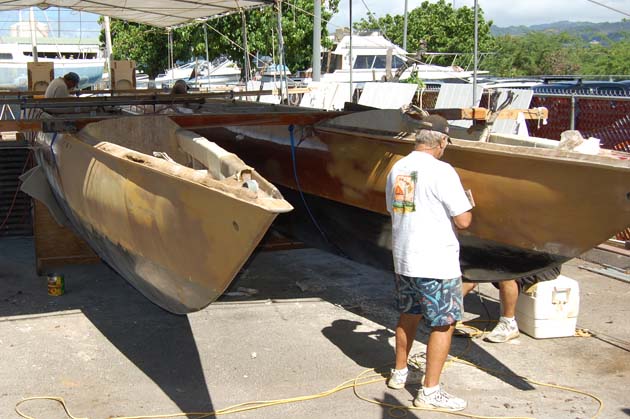
Work on the hulls is targeted for completion by the end of May, at which time the hulls with be lashed back together with eight new crossbeams (‘iako) that will widen the canoe's decking (pola) by two feet.
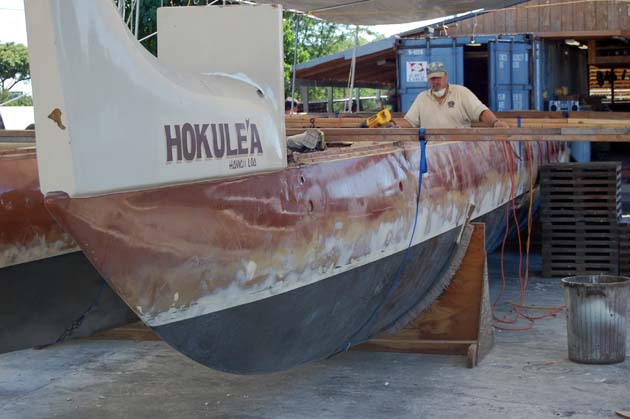
Bob Perkins, HCC faculty member and head of the Marine Education and Training Center, where PVS is housed and Hōkūle‘a is being cared for.
Other parts of the canoe (posts, rails, pola, catwalks, etc.) are scheduled to be lashed back onto the canoe from June to August.
Rigging is projected to be completed in September. (Click on image below for a larger graphic.)
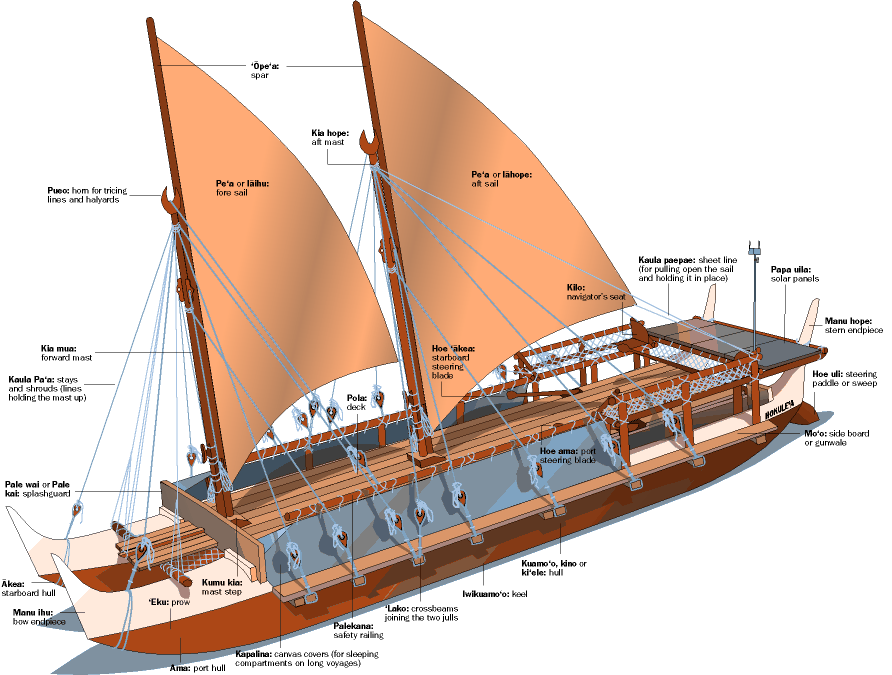
January: Worldwide Voyage Educator Orientation Session
On January 29, PVS held its second orientation session for the World Wide Voyage, for 45 educators.
The orientations sessions include
- a presentation on the World Wide Voyage (see the video in Worldwide Voyage and Education below);
- a sail on the coastal canoe Kamauheheu (for photos, see the 2010 PVS Newsletter on the first teacher orientation center; and
- a visit to Mokauea, an island in Ke‘ehi Lagoon, offshore from the HCC's Marine Education and Training Center. On Mokauea, which is reached by a short paddle out in Kai Makana canoes, educators learn about the...
archaeology and history of the island (Mālama Mo‘olelo, taking care of the stories of the land)
the community effort to prevent the State from evicting fishing families who live on the island (Mālama Kekahi i Kekahi, taking care of each other);
and efforts to restore the native plant life and fishpond on the island (Mālama Honua, taking care of the land and sea)
For more about Mokauea and the community work going on there, visit the Kai Makana website.
The goal of PVS is to inspire educators to develop curriculum and schools, from K-20, based on the vision of Mālama Hawai‘i, taking care of Hawai‘i, including Mālama Mo‘olelo (Humanities), Mālama Kekahi i Kekahi (Social Sciences, Human Services, and Education), and Mālama Honua (Natural Sciences and Environmental Education).

Joni Bagood and Kehaulani Souza of the Mokauea ‘Ohana talk to educators about the archaeology and history of the island.
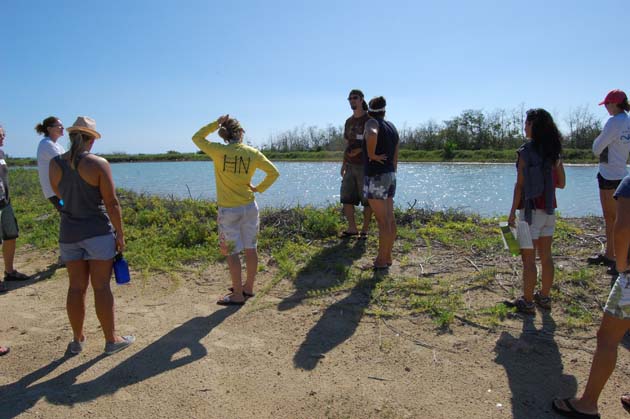
Daniel Amato talks to the educators about the community efforts to restore Mokauea Fishpond.
